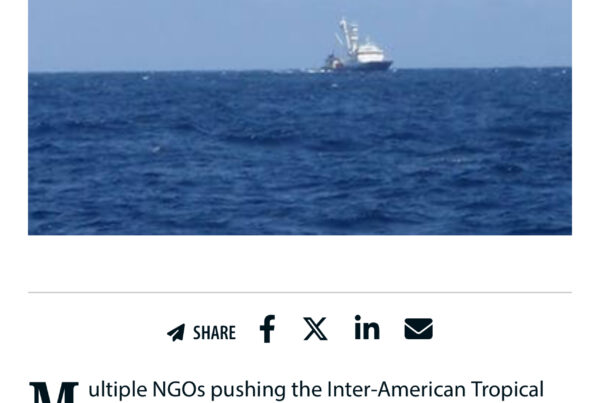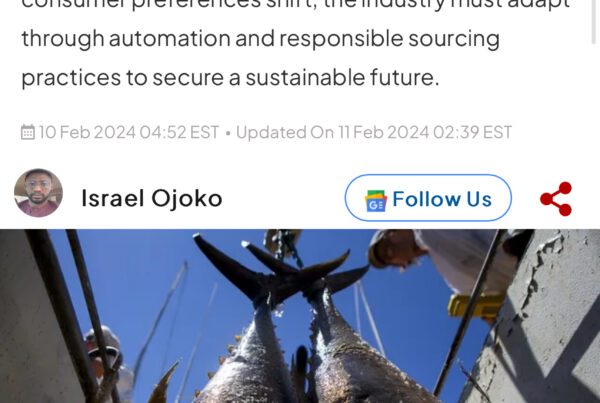UNITED STATES—On Dec. 6, the National Oceanic Atmospheric Administration announced that the United States won new conservation measures for the Pacific tuna and will support inspections to hinder illegal fishing. The Inter-American Tropical Tuna Commission (IATTC) has also adopted controls on floating devices that attract tunas and continues to make efforts to conserve and manage tuna.
With prior solutions to manage tropical tuna approaching its expiration date, the IATTC spent two meetings earlier this year negotiating new measures. As a result, the Commission adopted new three-year management measures for yellowfin, bigeye, and skipjack tunas caught by purse seine (a giant wall of netting deployed around an entire area of fish) and longline vessels in the eastern Pacific Ocean at the October meeting. They imposed a 72-day closure for purse seine vessels each year and apply additional closure days to vessels that exceed a 1,200 metric ton annual limit of bigeye tuna. The controls aim to ensure that tuna fishing in the eastern Pacific Ocean is sustainable.
Tropical tuna in the eastern Pacific Ocean gained refreshed protections and science-based catch levels under resolutions endorsed by the U.S. The IATTC adopted its regulation on tuna at its virtual meeting in October and established a framework for foreign fishing vessels to face spot inspections when they enter the port of another member nation.
IATTC manages the fish aggregating devices (FADs), floating human-made objects that attract tuna and other species and has adopted controls on FADs. Vessel operators track FADs through sonar buoys and fish around them, increasing their catches. As a result, the number of FADs has multiplied throughout the Pacific Ocean in recent years. Although the IATTC had formerly adopted measures to lower the risk of entanglement in FADs, any netting still has the chance of entangling marine life. Discarded FADs can also drift through the ocean and become marine debris that harms marine life and sensitive areas such as coral reefs.
The IATTC’s efforts will help conserve and continually manage tuna and other highly migratory species that cross international borders. The measures also improve a U.S. priority; the neglect of global fisheries to reduce illegal, unreported, and unregulated fishing (IUU fishing). The move promotes the effort to close the world’s ports to illegal fishing and give consumers confidence that their seafood is safe and sustainable.
“This is a critical step forward for the conservation of species that support important commercial fisheries and play a prominent role in the marine ecosystem,” said Ryan Wulff, who leads the U.S. delegation to the IATTC and serves as Assistant Regional Administrator for Sustainable Fisheries for NOAA Fisheries West Coast Region in an article put out by NOAA. “We worked through challenging negotiations, all in a virtual setting. In the end, we achieved consensus on a number of important conservation and management measures for the eastern Pacific Ocean.”
By a strategic move to combat IUU fishing, the Commission adopted a deep-rooted European Union proposal on standards for inspection of fishing vessels in ports. The measure requires the review of at least five percent of foreign fishing vessels by port states, plus investigating any detected IUU fishing. Port states must also report detected IUU fishing to vessels’ flag countries and other coastal states.
The IATTC also guarded existing management provisions and increased catch limits for Pacific bluefin tuna. In addition, the IATTC amended a long-term agreement requiring adjustment of catch limits if Pacific bluefin tuna is not expected to meet stock rebuilding targets. As a result, only the United States and Mexico catch bluefin tuna in the eastern Pacific Ocean. In recent years, most of that catch has been taken by Mexico, but the new IATTC resolution allocated a more significant share to U.S. vessels. Most Pacific bluefin catches occur in the western Pacific, caught primarily by Japan. Japan catches the most bluefin of any nation in the Pacific and solely fishes in the western Pacific.



